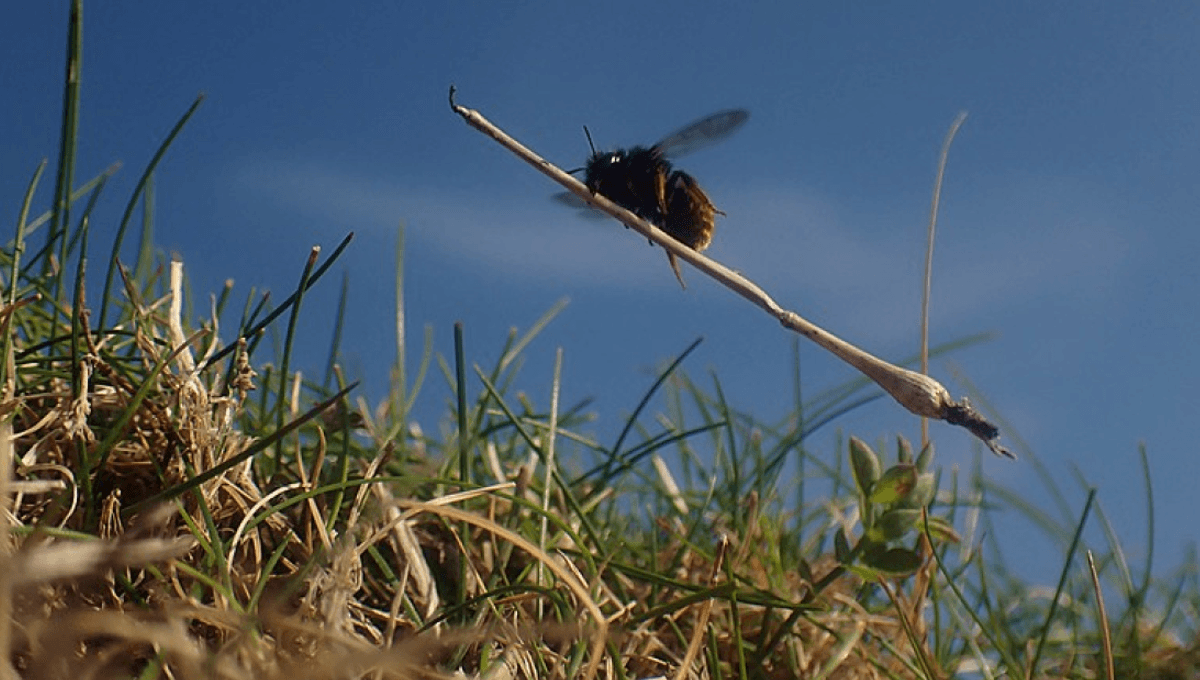
The witchy ways of UK mason bees are revealed in the Grasslands episode of David Attenborough and the BBC’s Wild Isles this Sunday. Flying around the countryside on broomsticks might seem like an unnecessary party trick for winged insects, but the peculiar behavior taps into the extremes these bees go to in order to protect their developing offspring.
The two-colored mason bee (Osmia bicolor) is arguably the best parent among Britain’s 250 bee species. In episode 3 of Wild Isles, we follow one mother on her pursuit for the perfect nest for each of her eggs and find out why they’ve earned the nickname “witch bee”.
“The two-coloured mason bee, our “witch bee”, whizzes around chalk grasslands looking for empty snail shells of the exact right size,” explained producer Nicholas Gates in a statement seen by IFLScience.
“Like Goldilocks with her porridge testing, the female two-coloured mason bee will check lots of empty shells in the grassland, some are too big, some are too small or damaged, until she finds just the right one within which to lay her egg.”
Snail egg nursery secured, the mason bee then has a second and considerably more exhausting task on her hands. Blade by blade, stick by stick, she will disguise her snail shell nest egg with dried materials like old grass. The stacks can be built to 20 sticks high, and each one gets there by being individually flown by the mason bee, making her look as if she is flying around on a broomstick.
If Ginny Beesley zooming around on a broom isn’t enough to whet your appetite, the Grasslands episode has plenty more intrigue to lure you into the luscious UK countryside. Camera woman Katie Mayhew got up-close and personal with mating adders to capture how the males get dragged around by their penises during copulation. It sounds like a rough deal, but they’ve evolved special penis barbs for this exact purpose.
A filming first is also captured in the episode as Attenborough reveals the full lifecycle of the large blue butterfly. Capturing it involved dedicating separate teams to different stages of this species’ complex lifestyle, which involves duping worker ants into taking in a caterpillar only for it to unleash a six-month assault on the colony’s larvae.
So, if you thought the UK countryside was all about bunnies and dandelions, think again. From the coastal flower meadows in the Scottish Outer Hebrides to the mountainous landscape of south-west Ireland, there’s plenty of death and despair to be found in the Great British outdoors.
Tune into BBC One and iPlayer for Wild Isles Grasslands from March 26.
Source Link: Bewitching Mason Bees Fly Around On Broomsticks To Keep Their Babies Safe